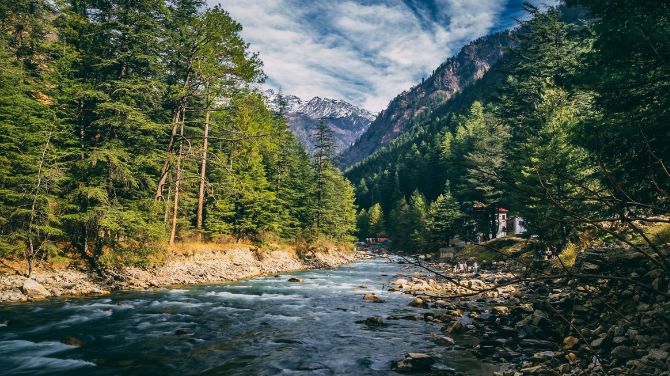Tanzania is one of Africa’s most iconic safari destinations, famous for the Serengeti, Ngorongoro Crater, Mount Kilimanjaro, and vast wildlife. With its rich ecosystems, big cat sightings, and the legendary Great Migration, planning a safari in Tanzania is a bucket-list dream. But when exactly is the best time to visit Tanzania for safari?
The answer depends on what you want to see, your budget, and your travel style. This guide will help you understand the seasons, climate, wildlife behavior, and the pros and cons of each month so you can plan the perfect Tanzanian safari adventure.
1. Overview: Tanzania’s Safari Seasons
Tanzania has two main safari seasons:
Dry Season (June to October)
Peak travel season
Best wildlife visibility
Cool and dry weather
Wet Season (November to May)
Lush green landscapes
Great for birdwatching and fewer tourists
Some roads may be muddy or closed in heavy rains
2. Best Time for the Great Wildebeest Migration
The Great Migration is a world-famous wildlife event where over 1.5 million wildebeest, zebras, and gazelles move across the Serengeti-Mara ecosystem. It’s a major highlight for safari-goers and occurs in different parts of the Serengeti throughout the year.
| Month | Migration Activity |
|---|---|
| January–March | Calving season in Southern Serengeti |
| April–May | Herds begin moving northwest |
| June–July | Migration reaches Western Corridor |
| August–October | River crossings near Northern Serengeti |
| November–December | Herds return to Southern Serengeti |
For river crossings, July to September is the best time to visit Tanzania for safari, particularly in the northern Serengeti.
3. Month-by-Month Safari Guide
January – Warm and Active
Weather: Warm and relatively dry
Wildlife: Calving season begins in southern Serengeti—great for predator action
Ideal For: Wildlife photographers
February – Calving Season Peak
Highlights: Thousands of baby wildebeests are born
Predator Activity: High—lions, cheetahs, and hyenas take advantage
Crowds: Moderate
March – Start of the Long Rains
Weather: Increasing rainfall and humidity
Scenery: Very green and beautiful
Note: Good time for birdwatchers
April – Wet Season Begins
Weather: Heavy rainfall
Travel Tip: Some lodges close, roads may be slippery
Pros: Lowest prices of the year
May – Green Season Continues
Landscapes: Spectacular and lush
Crowds: Fewest tourists
Good For: Budget travelers and solitude seekers
June – Start of the Dry Season
Weather: Rain eases, game-viewing improves
Wildlife: Herds begin migrating north
Ideal Time: Safari conditions improve significantly
July – Peak Safari Season
Weather: Cool and dry
Events: Wildebeest begin Grumeti River crossings
Crowds: High; early booking recommended
One of the Best Times to Visit Tanzania for Safari
August – Spectacular River Crossings
Highlights: Mara River crossings in Northern Serengeti
Animals: Big cats, elephants, giraffes, buffalo in abundance
Ideal For: Classic big game safaris
September – Consistent Wildlife Action
Wildlife: Peak predator-prey interactions
Scenery: Dusty but excellent for spotting animals
Booking: Plan at least 6 months in advance
October – Migration Moves South
Weather: Warm and dry
Good For: Less crowded, still excellent wildlife
November – Start of the Short Rains
Rain: Scattered showers begin
Wildlife: Herds moving south, still plenty to see
Discounts: Lower prices than peak season
December – Festive Season
Travel: Popular holiday time, especially Christmas/New Year
Wildlife: Wildebeest arrive back in Southern Serengeti
Good For: Combining safari with Zanzibar beach holidays
4. Best Time for Specific Safari Parks in Tanzania
Serengeti National Park
Best Time: June–October
Why: Dry season is ideal for wildlife viewing and migration tracking.
Ngorongoro Crater
Best Time: Year-round
Why: It’s a contained ecosystem, so animals don’t migrate far.
Tarangire National Park
Best Time: June–October
Why: Elephants and game concentrate around the Tarangire River.
Selous Game Reserve & Ruaha National Park
Best Time: June–October
Why: Roads are accessible and animals are easier to spot.
Lake Manyara National Park
Best Time: June–September
Why: Tree-climbing lions and flamingos are more active in the dry season.
5. Best Time Based on Your Travel Preference
| Type of Traveler | Best Time to Visit Tanzania for Safari |
|---|---|
| First-time visitors | July–September (dry season & migration) |
| Budget travelers | April–May (low season) |
| Bird watchers | November–April (wet season) |
| Wildlife photographers | February (calving season) |
| Honeymooners | June–August (cool weather, fewer bugs) |
6. Pros and Cons of Each Season
Dry Season (Pros)
Best for animal sightings
No rain, comfortable travel
Few mosquitoes
Dry Season (Cons)
More tourists
Higher prices
Dusty landscapes
Wet Season (Pros)
Lower costs
Beautiful green landscapes
Fewer tourists
Wet Season (Cons)
Some lodges close
Road conditions can be poor
Wildlife harder to spot in tall grass
7. Tips for Booking the Perfect Safari
Book Early: Especially for July–September
Consider Local Operators: They know the terrain best
Be Flexible: Shoulder seasons offer great value
Pack Right: Include waterproof clothing and neutral colors
8. Combine Your Safari with Zanzibar
If you’re visiting Tanzania for safari, consider adding a few days in Zanzibar afterward. White sandy beaches, turquoise waters, and spice tours offer a relaxing end to an action-packed safari trip.
Best time for a Zanzibar beach holiday? June to October and December to February.
Conclusion: Timing Is Everything in Tanzania
The best time to visit Tanzania for safari depends on what you want to experience. Whether it’s the drama of the Great Migration, the magic of the calving season, or the peaceful beauty of the green season, Tanzania delivers unforgettable moments all year round.
With proper planning and insight into seasonal patterns, you’ll enjoy close encounters with lions, elephants, zebras, and wildebeest in some of the most breathtaking landscapes on Earth.














Leave a comment